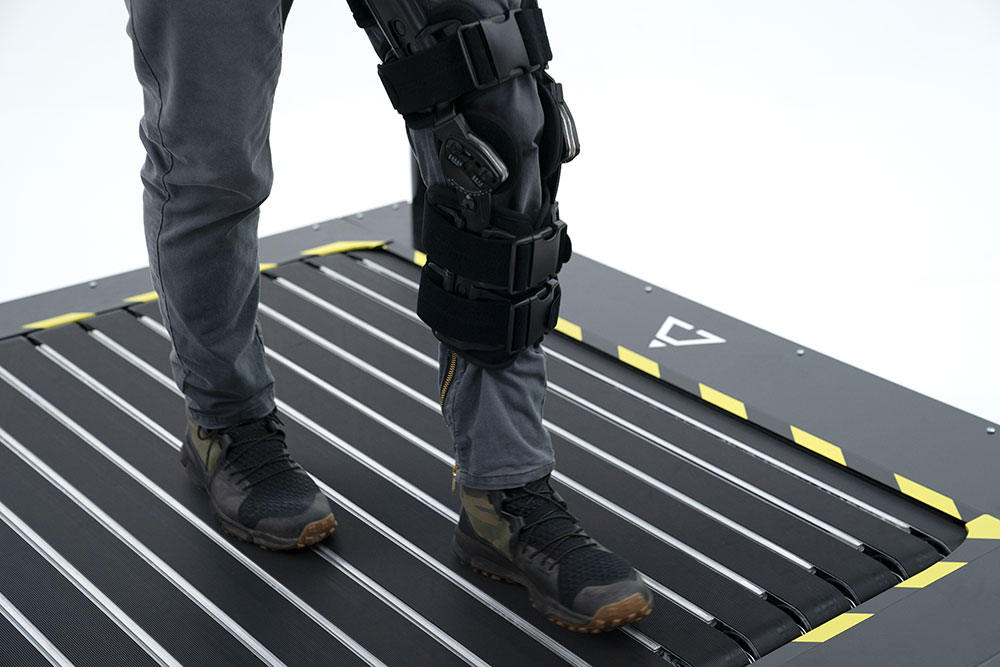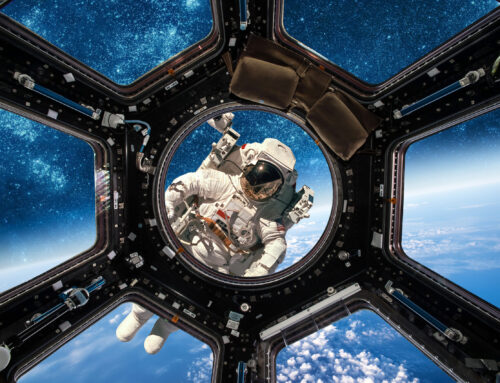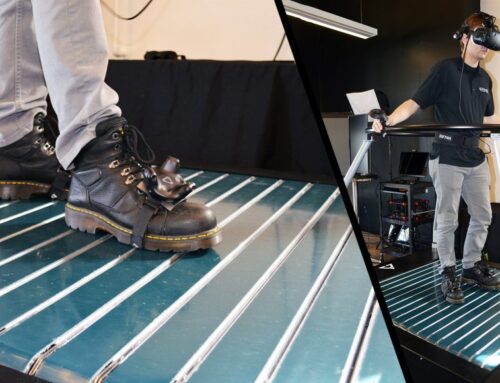One of the greatest challenges in engineering over the past decade has been merging virtual reality (VR) technology with the medical industry. Even after the years of research and inquiry that have gone into these efforts, little progress has been made. After their VR experience, people were left feeling symptoms similar to car-sickness such as nausea and headache, due to a discord between vision and other sensory pathways.
At Infinadeck, we have teamed with the scientists at Cleveland Clinic to solve this problem with locomotion once and for all and have developed an innovative VR experience. We are hopeful this advancement will aid in the further treatment of Parkinson’s Disease (PD). The early identification of this disease, along with other neurodegenerative diseases in adults, could be life-changing. With approximately 60,000 Americans being diagnosed with PD each year, this solution couldn’t have come at a better time.
Similar to treadmills you would use in your home or at the gym, we have created an omnidirectional treadmill. This treadmill is like “a treadmill on a thousand treadmills.” Where most treadmills only move in a linear, forward motion, our treadmill has a rotary motion facet that moves with the surface. This design is made to ensure that the user stays directly in the center of the treadmill by continually adjusting to its users’ body movements. The treadmill is paired specifically to algorithms designed to control the numerous belts of the apparatus.
Creating Realistic Virtual Reality Environments
Once the team at the Cleveland Clinic were able to resolve the locomotion problem, a whole world of possibilities in healthcare research became achievable. Dr. Albert and his team quickly started designing VR environments that mimicked situations often reported as difficult by PD patients.
The first environment they developed was the Cleveland Clinic Virtual Grocery Store Task. The subject, wearing a VR headset, is able to walk on the treadmill as if they are walking through the aisles of a real market, while they reach for items on their grocery list. They are able to make all the twists and turns that would accompany any typical visit to the supermarket.
The design of the omnidirectional treadmill allows a patient with a VR headset to experience the same somatosensory sensation that they would if they were actually out walking in the real world without experiencing nausea. Eliminating the nausea factor makes the subject able to more fully experience this VR world without being distracted by sickness or discomfort.
This VR practice is so important because it’s the first healthcare-related VR application that completely places patients in a virtual environment where they may experience freezing of gait or falls. It’s very difficult to treat something you can’t see happening and freezing is a symptom of PD that rarely shows itself while your doctor is present. However, it will at times manifest during VR sessions giving doctors more knowledge involving the freezing issue.
3 Clinical and Research Goals
To their knowledge, the Cleveland Clinic is the first facility to research technology of this nature. The clinic has three main goals they hope to achieve from their efforts:
-
Safely Enhancing Rehabilitation Therapy
For patients with various conditions such as those recovering from orthopedic surgery, stroke, or PD, our goal is to help step up their rehabilitation therapy in a safe manner. The VR experiences we have created with the omnidirectional treadmill allow patients’ gait and stability to be tested and taxed in a safe and controlled environment. We also have the capability to monitor the rehab progress of a patient due to the subjective nature of the treadmill.
-
Evaluating Gait Freezing
Another one of our goals is to use the omnidirectional treadmill to help evaluate freezing gait for patients with PD. We are striving to refine their deep brain stimulation (DBS) programming as well as their PD medication routines.
Dr. Albert notes, “People with PD tend to freeze and fall when they are doing a challenging task that involves dual motor and cognitive components.” He, along with Kenneth Baker Ph.D. of Cleveland Clinic Center for Neurological Restoration is preparing to launch a trial study involving 15 patients who suffer from PD. They are planning to use
neurophysiologic monitoring of the subthalamic nucleus while patients complete the grocery store task while also doing a home environment task on the treadmill. Their hope is to pinpoint neural signatures of freezing-of-gait episodes in these subjects as well as target and alter their brain activity to improve that and other postural dysfunctions.
-
Identifying and Monitoring Neurodegenerative Disease
We also hope to use our VR platform to evaluate activities of daily living (ADL’s) in older people who could potentially be at risk for conditions like Alzheimer’s disease and PD. ADL’s are activities that require motor skills along with cognitive ability to complete tasks that allow individuals to live independently. Some of these activities would include house cleaning, cooking, keeping up with personal finances, administering their own medications, and being in control of their transportation.
Through our monitoring in these virtual environments, we could catch the decline in ADLs, and could likely identify these neurodegenerative diseases very early on. Early detection would prove extremely beneficial so effective treatments could be administered. Our treadmill also enables subjective quantitative assessment of ADL function. We would ultimately love to see these assessments become part of the annual examinations for geriatric patients.
What next?
These technological advances will no doubt have the capacity to help individuals with PD, AD, and those who have suffered a stroke, but will likely help other demographics as well. Some of the same factors that can contribute to freezing of gait and falls in PD patients may also be factors for those with epilepsy. We are working with our epilepsy colleagues to determine potential VR protocols that could be used in the advancement and research of epilepsy as well.




